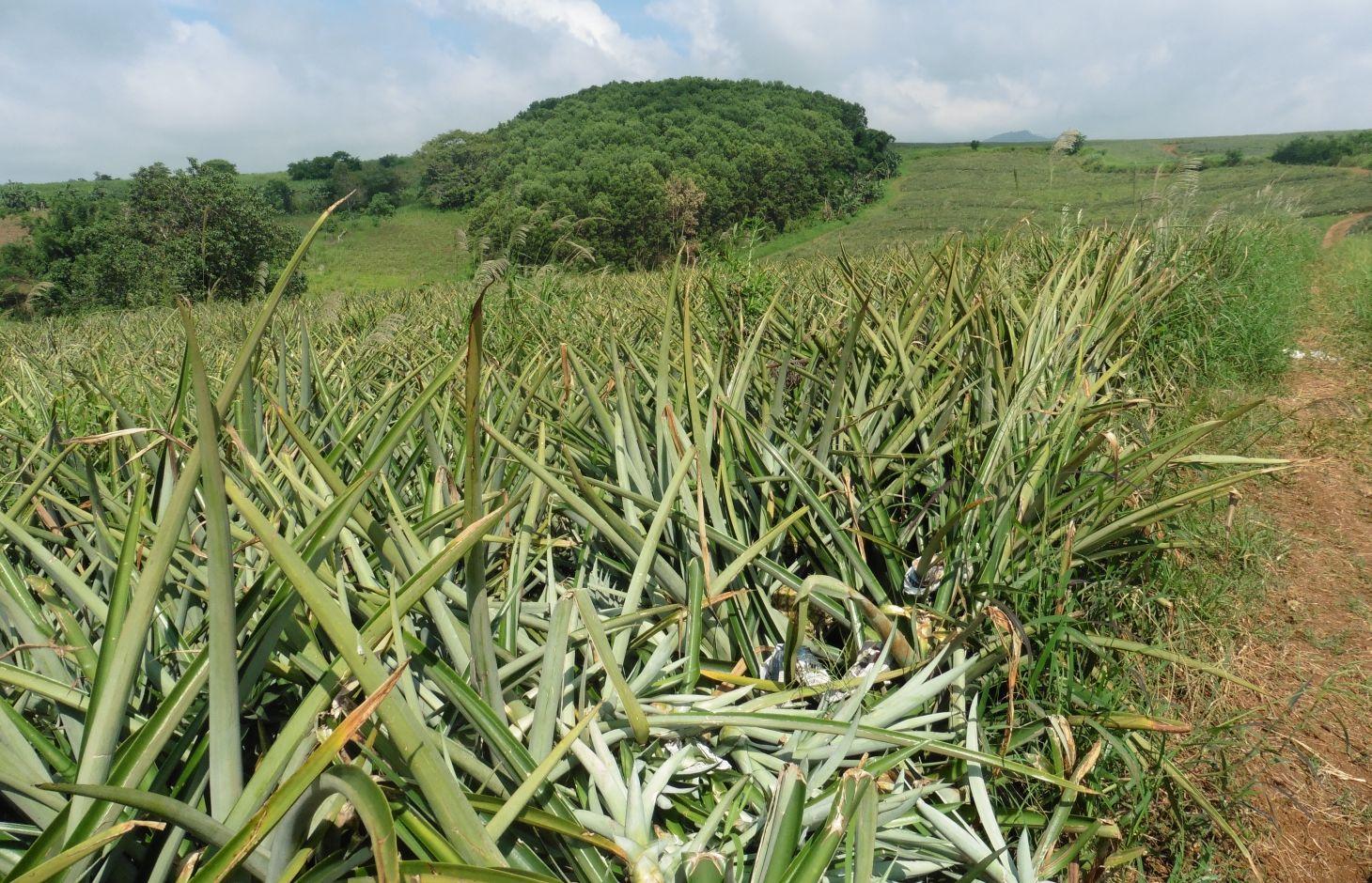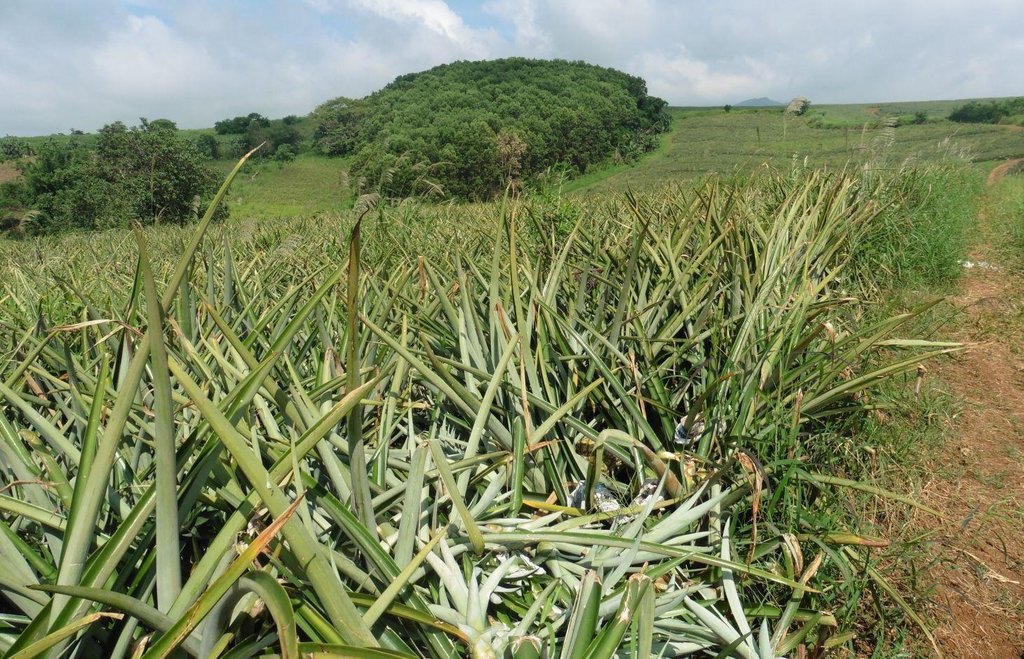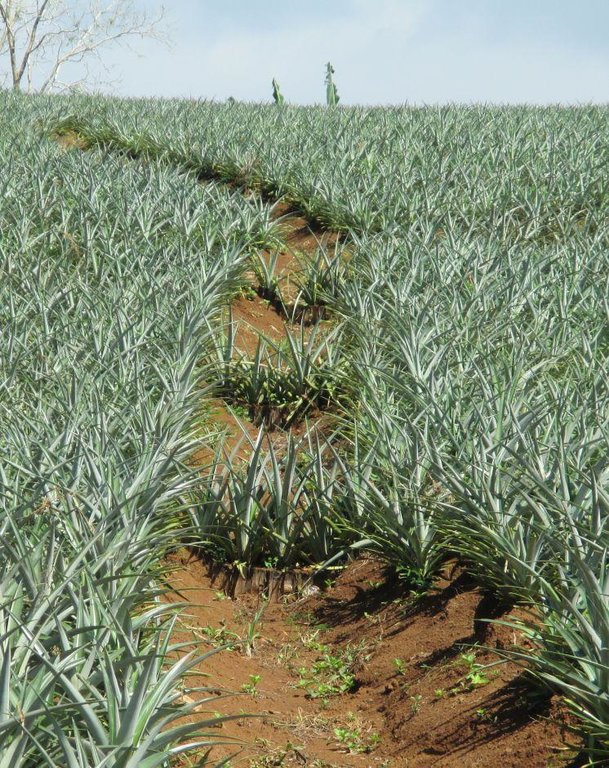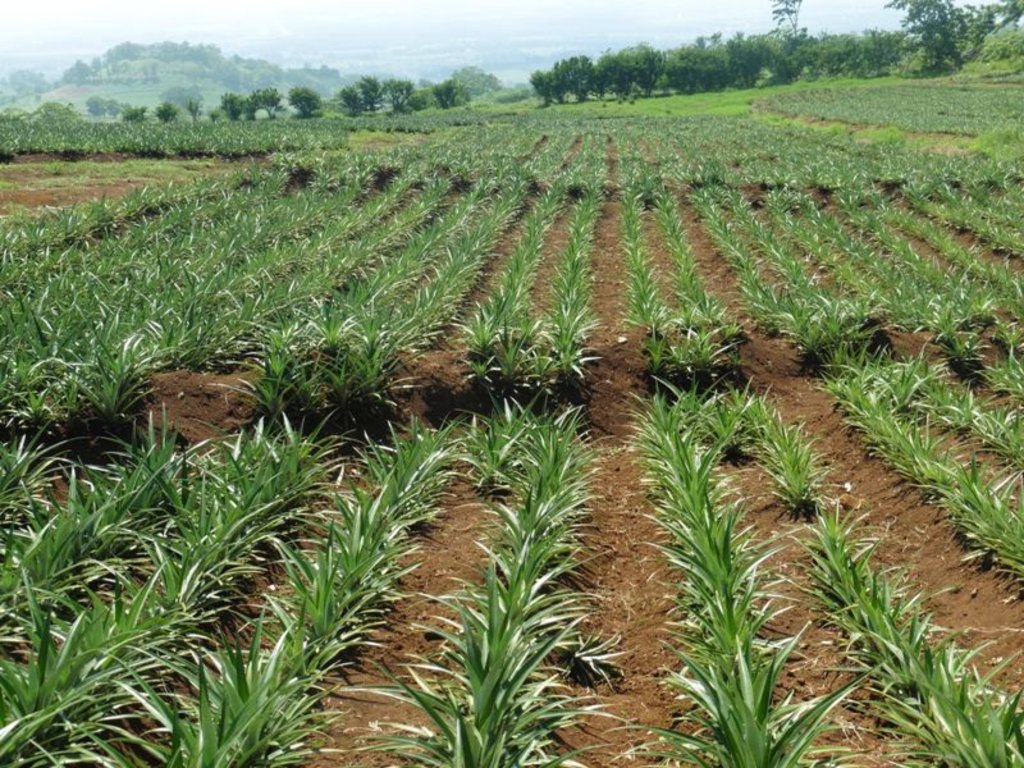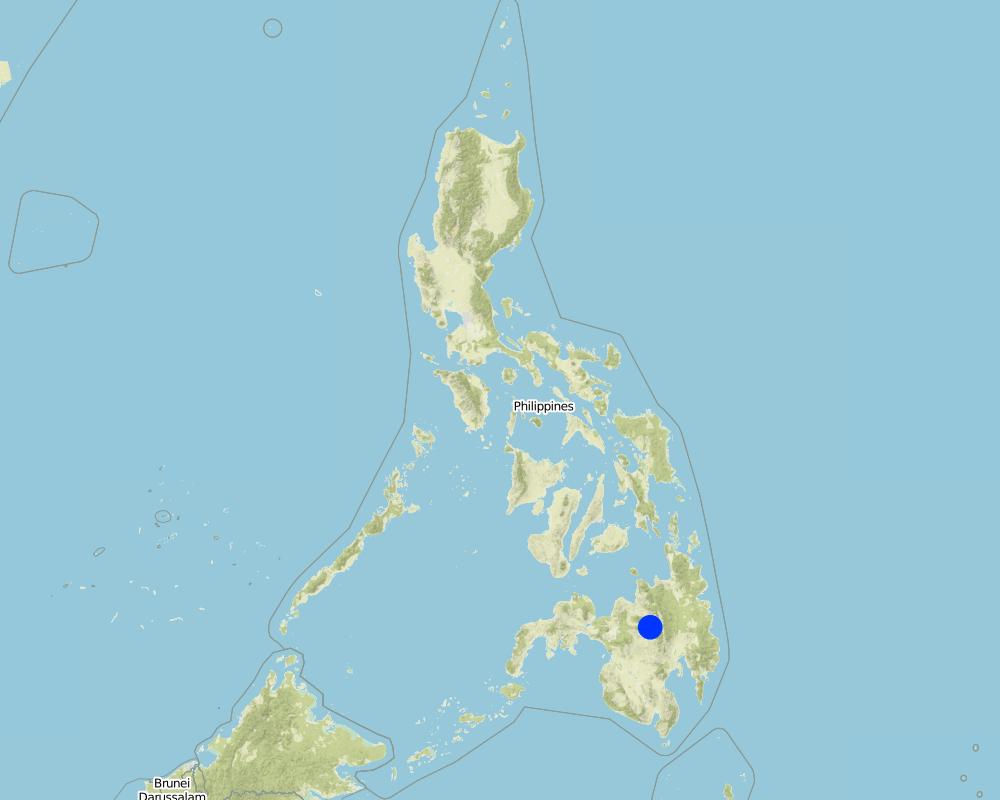Integrated Soil and Water Conservation Approach in Improving Biophysical Condition of Mt. Kitanglad Agri-Development Corporation (MKADC) Pineapple Production [Philippines]
- Creation:
- Update:
- Compiler: Philippine Overview of Conservation Approaches and Technologies
- Editor: –
- Reviewers: Eduardo Alberto, Rima Mekdaschi Studer
approaches_1970 - Philippines
- Full summary as PDF
- Full summary as PDF for print
- Full summary in the browser
- Full summary (unformatted)
- Integrated Soil and Water Conservation Approach in Improving Biophysical Condition of Mt. Kitanglad Agri-Development Corporation (MKADC) Pineapple Production: March 20, 2017 (inactive)
- Integrated Soil and Water Conservation Approach in Improving Biophysical Condition of Mt. Kitanglad Agri-Development Corporation (MKADC) Pineapple Production: March 29, 2017 (public)
View sections
Expand all Collapse all1. General information
1.2 Contact details of resource persons and institutions involved in the assessment and documentation of the Approach
Key resource person(s)
SLM specialist:
SLM specialist:
SLM specialist:
Dinamling Djolly Ma. P.
Bureau of Soils and Water Management
Philippines
SLM specialist:
Bersabe Teodoro M.
Bureau of Soils and Water Management
Philippines
SLM specialist:
Betonio Gloria L.
DA-NOMIARC
Philippines
SLM specialist:
Manubag Jerry M.
(088) 221 4302
manubagjerry@gmail.com
Mt. Kitanglad Agri-Development Corporation, Lurugan, Valencia City, Bukidnon
Name of project which facilitated the documentation/ evaluation of the Approach (if relevant)
Decision Support for Mainstreaming and Scaling out Sustainable Land Management (GEF-FAO / DS-SLM)Name of the institution(s) which facilitated the documentation/ evaluation of the Approach (if relevant)
Department of Agriculture-Region VIII (DA-8) - Philippines1.3 Conditions regarding the use of data documented through WOCAT
When were the data compiled (in the field)?
10/08/2015
The compiler and key resource person(s) accept the conditions regarding the use of data documented through WOCAT:
Yes
1.4 Reference(s) to Questionnaire(s) on SLM Technologies
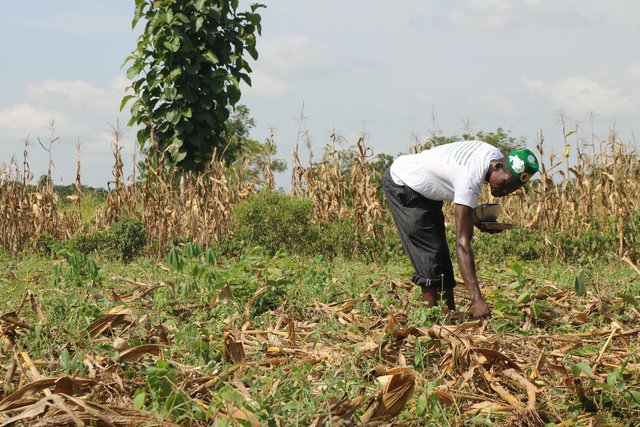
Mulching and Cover Cropping [Benin]
Mulching is the practice of spreading non-living organic matter - such as crop residues - onto the soil for its protection and improvement while cover cropping is the planting of a legume species such as mucuna which protects the soil surface and fixes nitrogen,
- Compiler: Gatien AGBOKOUN CHRISTOPHE
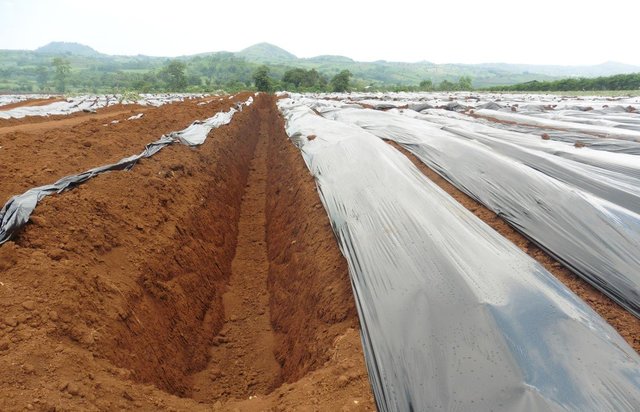
Sediment Traps [Philippines]
Sediment traps are structures built in the area which includes cascading catchment canal, silt traps and catch basin along perimeter, between pineapple fields and along diversion ditches to collect runoff during rains, preventing and minimizing the eroded soils cascading into natural bodies of water.
- Compiler: Philippine Overview of Conservation Approaches and Technologies
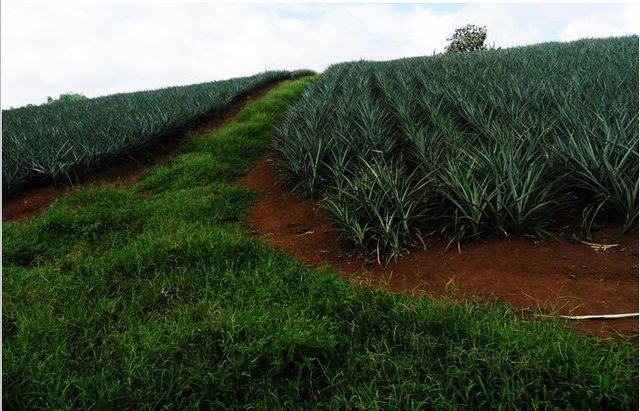
Contour Straight Block Layout [Philippines]
It is a package of soil and water conservation technology that integrates contouring, bedding, and blocking.
- Compiler: Philippine Overview of Conservation Approaches and Technologies
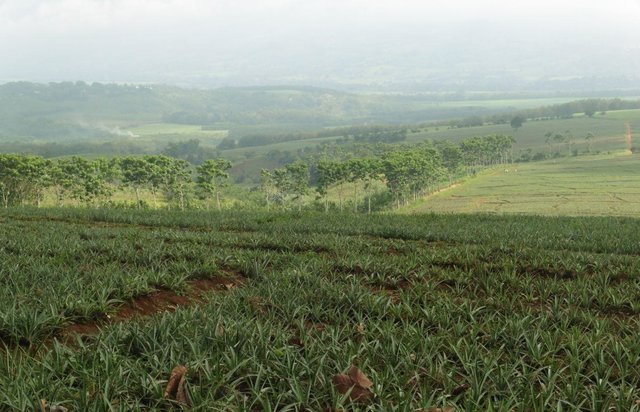
Trees as Buffer Zones [Philippines]
Trees as buffer zones are vegetative measures established in the area to prevent pest from crossing in between blocks. Further, the technology provides haven for flora and fauna which are endemic in the area.
- Compiler: Philippine Overview of Conservation Approaches and Technologies
2. Description of the SLM Approach
2.1 Short description of the Approach
Integration of soil and water conservation technologies primarily aim to protect the area from loss of biodiversity and land degradation.
2.2 Detailed description of the Approach
Detailed description of the Approach:
Aims: (1) To improve biodiversity in the area; (2) To prevent on-site erosion; and (3) To minimize off-site impacts like siltation of natural water bodies.
MKADC is internationally renowned producer of export quality fresh pineapples. They cater different countries in Asia as a proof of their excellent service in pineapple production. Along with this success in MKADC, environmental management system is incorporated in their production area which gives additional merit in the protection of our ecology. This system includes various soil and water conservation technologies namely: 1) buffer zones; 2) sediment traps, brush dams and catch basins; 3) contour straight block lay-out technology; 4) natural vegetative strip; 5) pineapple as erosion control commodity; and 6) relay cropping which aim to minimize soil erosion and improve biodiversity in the area.
Stages of implementation: (a) Site development for 4 to 6 months; (b) Land preparation for 3 months; (c) Planting and replanting; (d) Plant care and crop management which include fertilization and weed control when the pineapple is at 2 to 11 months; (e) Flower induction, fruit development, fruit care and fruit estimates when pineapple is at 12 to 17 months; (f) Degreening and harvesting at 18 months; (g) Ratooning; and (h) Maintenance i.e manual weeding (as needs arises).
The primary stakeholders are the land owners of the leased lands and MKADC.The approach of MKADC ensures that at the end of the contract between the company and the land owners, the land is still productive.
2.3 Photos of the Approach
2.5 Country/ region/ locations where the Approach has been applied
Country:
Philippines
Region/ State/ Province:
Brgy. Lurugan, Valencia City, Bukidnon
Map
×2.6 Dates of initiation and termination of the Approach
If precise year is not known, indicate approximate date when the Approach was initiated:
less than 10 years ago (recently)
2.7 Type of Approach
- recent local initiative/ innovative
2.8 Main aims/ objectives of the Approach
The main objectives of the approach are to prevent soil erosion and improve biodiversity.
2.9 Conditions enabling or hindering implementation of the Technology/ Technologies applied under the Approach
legal framework (land tenure, land and water use rights)
- enabling
Contract leasing minimum of ten years. After ten years and the owner wish to have its land back, the company is obliged to return the land to its original state/ or productivity. They conduct before and after fertility sampling to ensure the area is productive for cultivation.
workload, availability of manpower
- enabling
Compliment labor needs from field operations thru internal environmental management services. Filling up the labor requirement thru reassignment of regular labor from other areas.
other
- enabling
Fences were built along boundaries to prevent the entry of stray animals and assignment of watchmen in critical areas.
3. Participation and roles of stakeholders involved
3.1 Stakeholders involved in the Approach and their roles
- local land users/ local communities
3.2 Involvement of local land users/ local communities in the different phases of the Approach
| Involvement of local land users/ local communities | Specify who was involved and describe activities | |
|---|---|---|
| initiation/ motivation | self-mobilization | Sustainability of pineapple production inspite of identical issues on soil erosion, slope protection, and soil fertility loss. |
| planning | self-mobilization | Yearly review and modification of farm field layout to correct deficiencies and to enhance control measures. |
| implementation | self-mobilization | Integrated in the pineapple field production approaches. |
| monitoring/ evaluation | self-mobilization | Internal audits / self-monitoring during high rainfall. |
| research | self-mobilization | Benchmarking on new approaches to address identified issues. |
3.4 Decision-making on the selection of SLM Technology/ Technologies
Specify who decided on the selection of the Technology/ Technologies to be implemented:
- land users alone (self-initiative)
Explain:
The land user in this approach is the company itself (Mt. Kitanglad Agri Development Corporation). Trial and error method was applied to determine the most optimum design of the SWC technology structures.
Specify on what basis decisions were made:
- personal experience and opinions (undocumented)
4. Technical support, capacity building, and knowledge management
4.1 Capacity building/ training
Was training provided to land users/ other stakeholders?
Yes
Specify who was trained:
- field staff/ advisers
Form of training:
- on-the-job
4.2 Advisory service
Do land users have access to an advisory service?
No
4.3 Institution strengthening (organizational development)
Have institutions been established or strengthened through the Approach?
- no
4.4 Monitoring and evaluation
Is monitoring and evaluation part of the Approach?
Yes
If yes, is this documentation intended to be used for monitoring and evaluation?
No
4.5 Research
Was research part of the Approach?
Yes
Specify topics:
- technology
Give further details and indicate who did the research:
Collection of sediment/ silt from sediment traps and catch basins. Attempt to conduct research by third party, however cost constraints are foremost. In-house are conducted thru practical approaches and benchmarking.
5. Financing and external material support
5.1 Annual budget for the SLM component of the Approach
If precise annual budget is not known, indicate range:
- 10,000-100,000
Comments (e.g. main sources of funding/ major donors):
MKADC (land owner,company) 100%
5.2 Financial/ material support provided to land users
Did land users receive financial/ material support for implementing the Technology/ Technologies?
No
5.3 Subsidies for specific inputs (including labour)
- none
5.4 Credit
Was credit provided under the Approach for SLM activities?
No
5.5 Other incentives or instruments
Were other incentives or instruments used to promote implementation of SLM Technologies?
No
6. Impact analysis and concluding statements
6.1 Impacts of the Approach
Did the Approach help land users to implement and maintain SLM Technologies?
- No
- Yes, little
- Yes, moderately
- Yes, greatly
Retention of soil fertility since eroded soils are trapped in the catchment canals, embankments and other structures to prevent the further movement of the soil downstream.
Did the Approach empower socially and economically disadvantaged groups?
- No
- Yes, little
- Yes, moderately
- Yes, greatly
It provided additional source of income for laborers to support their families.
Did the Approach improve issues of land tenure/ user rights that hindered implementation of SLM Technologies?
- No
- Yes, little
- Yes, moderately
- Yes, greatly
The land used for the pineapple production are leased from private owners. If the owner decided not to renew the lease of contract then the company needs to revert back the state of the land before returning to the owner.For this, soil fertility analysis is being practiced.Water rights use is exclusive under National Irrigation Administration (NIA). Need for water are arrange thru fees.
Did other land users / projects adopt the Approach?
- No
- Yes, little
- Yes, moderately
- Yes, greatly
Some private companies are starting to adopt the approach. Small-scale farmers nearby the plantation are also encouraged in establishing SWC structures but most of them did not adopt the technology as it lessened the production area and would entail additional cost for them.
Did the Approach lead to improved livelihoods / human well-being?
- No
- Yes, little
- Yes, moderately
- Yes, greatly
The program of MKADC encourages additional job opportunities for the people in the barangay and neighboring communities especially if other companies and individual farmers adopt the system.
6.2 Main motivation of land users to implement SLM
- increased production
- increased profit(ability), improved cost-benefit-ratio
- environmental consciousness
- customs and beliefs, morals
6.3 Sustainability of Approach activities
Can the land users sustain what has been implemented through the Approach (without external support)?
- yes
If yes, describe how:
The company has the financial capabilities to sustain the program since it is part of their workplan.
6.4 Strengths/ advantages of the Approach
| Strengths/ advantages/ opportunities in the land user’s view |
|---|
| Pineapple produced are exported in Japan, Korea, Middle East and China. |
| Physical environment is favorable for pineapple production. |
| Strengths/ advantages/ opportunities in the compiler’s or other key resource person’s view |
|---|
| Improves livelihood of farmers/ land-users without compromising the productivity of the land since it is ecologically viable. |
| Financial capabilities of the company to implement and sustain the program. |
6.5 Weaknesses/ disadvantages of the Approach and ways of overcoming them
| Weaknesses/ disadvantages/ risks in the land user’s view | How can they be overcome? |
|---|---|
| Physical destruction of field planted with trees providing additional environmental depletion by outside parties (eg. charcoal making, firewood, others). |
| Weaknesses/ disadvantages/ risks in the compiler’s or other key resource person’s view | How can they be overcome? |
|---|---|
| High input and labour requirements. |
7. References and links
7.1 Methods/ sources of information
- field visits, field surveys
- interviews with land users
Links and modules
Expand all Collapse allLinks

Mulching and Cover Cropping [Benin]
Mulching is the practice of spreading non-living organic matter - such as crop residues - onto the soil for its protection and improvement while cover cropping is the planting of a legume species such as mucuna which protects the soil surface and fixes nitrogen,
- Compiler: Gatien AGBOKOUN CHRISTOPHE

Sediment Traps [Philippines]
Sediment traps are structures built in the area which includes cascading catchment canal, silt traps and catch basin along perimeter, between pineapple fields and along diversion ditches to collect runoff during rains, preventing and minimizing the eroded soils cascading into natural bodies of water.
- Compiler: Philippine Overview of Conservation Approaches and Technologies

Contour Straight Block Layout [Philippines]
It is a package of soil and water conservation technology that integrates contouring, bedding, and blocking.
- Compiler: Philippine Overview of Conservation Approaches and Technologies

Trees as Buffer Zones [Philippines]
Trees as buffer zones are vegetative measures established in the area to prevent pest from crossing in between blocks. Further, the technology provides haven for flora and fauna which are endemic in the area.
- Compiler: Philippine Overview of Conservation Approaches and Technologies
Modules
No modules


